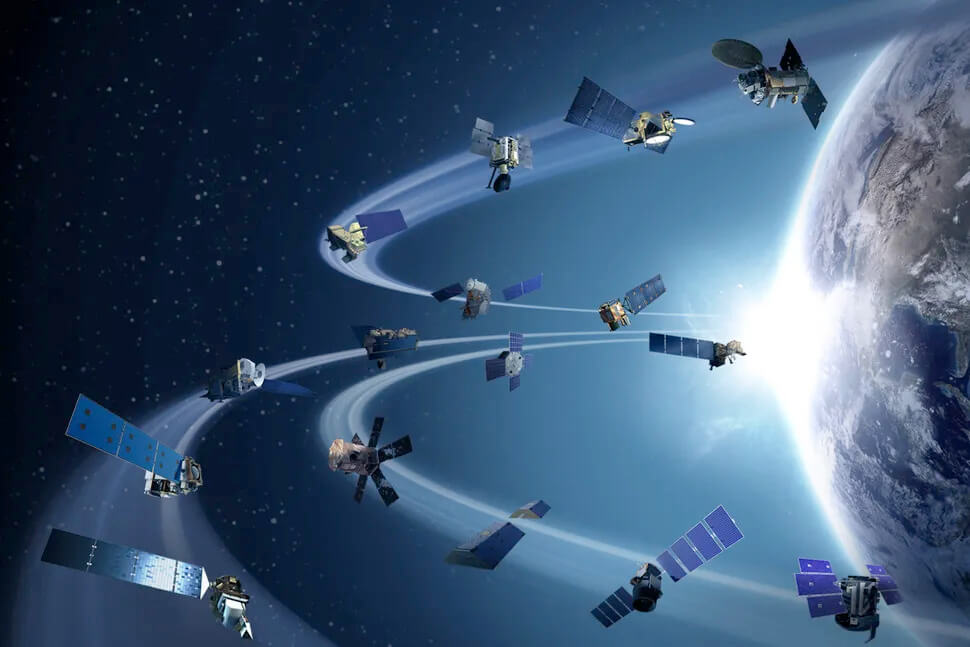While the majority of Midwestern farmers rotate corn and soybeans, commodity prices and corn yield advantages compel some to plant corn year after year. Although foundational research on the benefits of corn-soybean rotation goes back decades, University of Illinois Urbana-Champaign scientists are working to address remaining holistic questions about crop yield, environmental impacts, and economic returns under various crop rotation scenarios.
- Lauren Quinn
In a new study, researchers from the university's Agroecosystem Sustainability Center and the College of Agricultural, Consumer and Environmental Sciences used the sophisticated agroecosystem model ecosys to explain why corn yield is higher after soybean at normal nitrogen fertilization rates; how corn-soy rotation impacts soil greenhouse gas emissions and nitrogen leaching; and when corn-soy rotation is most economically advantageous.
"We found that while corn-soy rotation can boost corn yields and reduce nitrogen fertilizer needs, the benefits come with nuanced environmental and soil carbon trade-offs," said study leader Kaiyu Guan, founding director of the ASC and ACES Levenick Professor in the Department of Natural Resources and Environmental Sciences at Illinois.
Fertilizer rates determine corn yield boost from rotation
After training the ecosys model on a decade's worth of Department of Crop Sciences field trials with varying rotations and nitrogen fertilizer rates, the researchers were not surprised to find corn grown after soybeans consistently yielded about 6.4% more, on average, than continuous corn, at standard nitrogen rates (151 kilograms of nitrogen per hectare).
Diving deeper, the team found that the lower biomass and faster breakdown of soybean residue left the soil surface more exposed in spring, when corn is planted. Exposed soils warm more rapidly, which in turn causes soil microbes to mineralize more nitrogen from organic matter, providing a source of available nitrogen for young corn plants - an effect much like starter fertilizer commonly used by farmers. The researchers found this led to greater corn yield by the end of the season.
However, this advantage decreased with higher nitrogen fertilizer rates.
"The more nitrogen you add, the less yield benefit you get from rotation," said the study's first author Ziyi Li, research scientist at ASC. "In some cases, the yield boost nearly disappears."
Rotation reduces emissions, but affects soil carbon and nitrogen loss
From an environmental standpoint, corn-soy rotation helped reduce nitrous oxide and ammonia emissions from soils. But the fast-decomposing soybean residues led to an overall reduction in soil organic carbon compared to continuous corn.
Not surprisingly, nitrogen leaching was lower in soybean years due to the absence of fertilizer application. However, the fact that there was still nitrogen leaching under soybeans points to the importance of nitrogen mineralization from organic matter. Leaching increased in subsequent corn years when decomposed soybean residues released nitrogen into the soil.
"These results underscore a key trade-off," Guan said. "Rotation improves some sustainability metrics while compromising others, especially under typical fertilization practices."
Economic returns favor rotation, but depend on fertilizer use and market prices
Using historical commodity prices, the researchers found that corn-soy rotation offered higher economic returns - up to $458/acre ($1,133/hectare) more than continuous corn - at low nitrogen fertilizer rates (45 pounds/acre) and under typical market conditions (soybean: $11/bushel, corn: $4.50/bushel, and N fertilizer: $193/Mg ($175/short ton) UAN). But under high nitrogen inputs and market scenarios with elevated corn prices, this advantage was significantly reduced or even reversed.
"The extent to which one cropping system outperforms the other in terms of net agronomic benefits depends on more than just corn yield and nitrogen fertilizer usage, but also needs to consider soybean yield and market-driven prices, including fertilizer, grain, and costs such as machinery," Li said. "Such comprehensive economic assessments can help farmers make informed decisions about crop sequences, especially in response to market fluctuations, and inform insurance products and conservation initiatives accordingly."
No universal approach
The study underscores the importance of tailoring nitrogen management to balance profitability and sustainability. Lower fertilizer rates in corn-soy rotation compared with continuous corn can maximize economic return while mitigating some environmental impacts, but farmers must weigh these benefits against potential declines in soil organic matter and greater nutrient leaching.
"Our work gives farmers and policymakers a more holistic view of organic matter, nitrogen, and yield outcomes," said co-author Andrew Margenot, associate professor in crop sciences at Illinois. "We've known that these components matter and how they respond individually, but tying them together to show the interconnectedness is key."
Additionally, Margenot points out that this work underscores the need to consider long-term changes in organic matter given its importance as a source of nitrogen for crop uptake.
"These results are consistent with increased nitrogen mineralization under soybean than corn, and declines in organic matter being driven by soybean in the corn-soybean rotation," he said.
Decades of research have pointed to advantages of crop rotation in terms of yields, reduced fertilizer needs, and soil health. The new study provides a robust scientific rationale for rotation and fills a previous knowledge gap by quantifying the agricultural outcomes of corn-soy rotation in detail. Despite the environmental tradeoffs discovered by the team, the economic analysis demonstrates that crop rotation is profitable, especially at lower fertilizer rates.
The paper, "Comparing continuous-corn and soybean-corn rotation cropping systems in the U.S. central Midwest: Trade-offs among crop yield, nutrient losses, and change in soil organic carbon," is published in Agriculture, Ecosystems and Environment [DOI: 10.1016/j.agee.2025.109739]. The research was supported by the Illinois Nutrient Research & Education Council, Illinois Soybean Association, the National Science Foundation, the NASA Acres Program, the U.S. Department of Energy's ARPA-E SMART-FARM program, and the USDA National Institute of Food and Agriculture.






